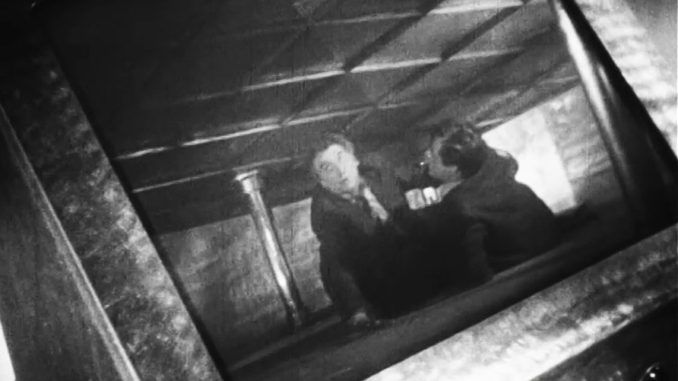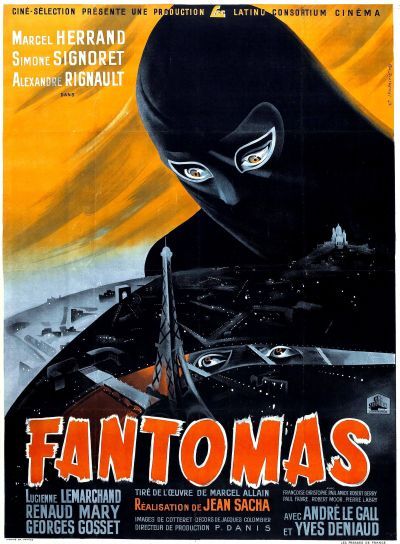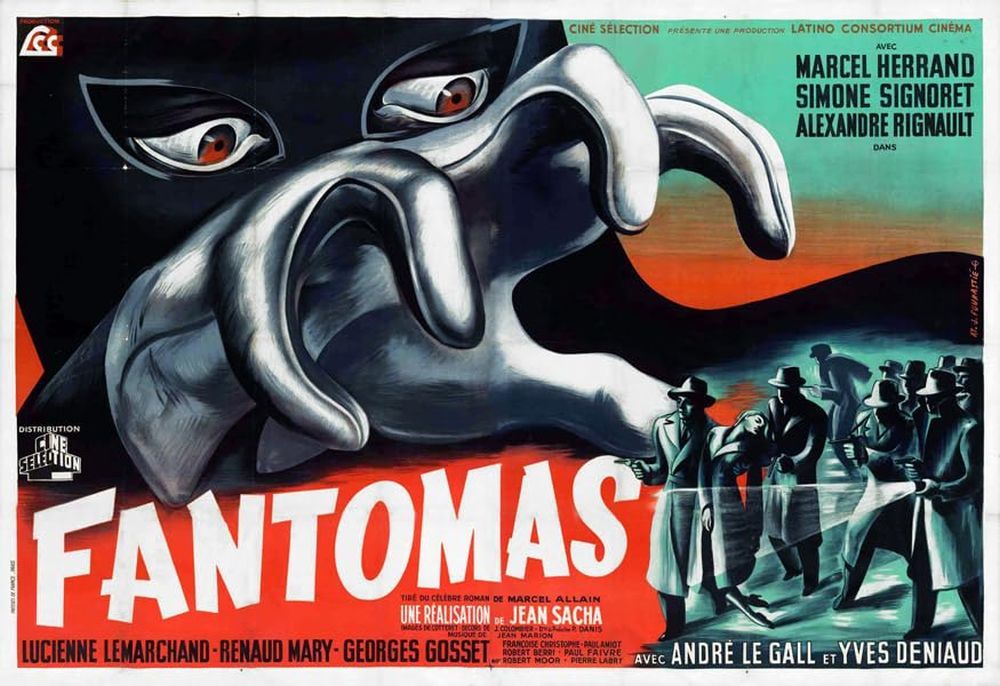
Rating: D+
Dir: Jean Sacha
Star: Marcel Herrand, Simone Signoret, Alexandre Rignault, André Le Gall
This year may be the low-point of horror since it started. Worldwide, a grand total of seven films were released in 1947 which the IMDb classifies in the genre. None were made in Britain or the United States, and this is the only one with as many as fifty votes on the IMDb. It has two reviews listed there: one in French, and the other is by someone who watched it unsubtitled and consequently admits, “I couldn’t follow the story at all.” So, this may be the most detailed review in English by someone with half a clue, since my copy had subtitles. But would it be sufficiently horror-iffic to qualify? I had doubts, and I’m not going to lie, looked for a back-up option.
The sole accessible alternate was La Herencia de la Llorona, a Mexican film which was an unofficial sequel to an earlier hit, 1933’s La Llorona. We’ve discussed that common Latin American myth before, and these two films demonstrate the long cinematic pedigree it possesses. The first Mexican sound film was only made in 1932, with La Llorona often seen as the country’s first horror movie. However, Herencia was only available with auto-translated English subs which were imperfect, to be kind. I might get round to it – though more likely its predecessor – down the pipe. Although reviews suggest Herencia was as much a family drama, concluding “There’s a valid argument for this not being a horror film at all.” Welp. Fingers crossed for Fantômas then.
 The titular master criminal originated in a 1911 novel of the same name, written by Marcel Allain and Pierre Souvestre, whose popularity spawned more than thirty sequels in just a couple of years, with Allain continuing solo until as late as 1963. To some extent, Fantômas was inspired by another popular criminal, Arsène Lupin, though possessing far less of a moral code. The books had been adapted into a number of silent film series, beginning shortly after publication, and a 1932 feature, also called Fantômas. The character is likely best known in French pop culture, through a trilogy made in the sixties, starring Jean Marais. Though those versions were almost tongue-in-cheek, drawing as much from the Bond films popular at the time, as the original novels. Plans to resurrect the character this century, with Vincent Cassel and Christophe Gans, came to nothing.
The titular master criminal originated in a 1911 novel of the same name, written by Marcel Allain and Pierre Souvestre, whose popularity spawned more than thirty sequels in just a couple of years, with Allain continuing solo until as late as 1963. To some extent, Fantômas was inspired by another popular criminal, Arsène Lupin, though possessing far less of a moral code. The books had been adapted into a number of silent film series, beginning shortly after publication, and a 1932 feature, also called Fantômas. The character is likely best known in French pop culture, through a trilogy made in the sixties, starring Jean Marais. Though those versions were almost tongue-in-cheek, drawing as much from the Bond films popular at the time, as the original novels. Plans to resurrect the character this century, with Vincent Cassel and Christophe Gans, came to nothing.
Is this adaptation horror? Sure. Okay: in the absence of any credible alternative, it’s as close as the year 1947 can deliver. Admittedly, it feels more as if a Bond movie had concentrated on Blofeld, and his plan to [checks notes] kill a million Parisians with a death-ray of his own invention, unless the government hands over a billion francs in gold. Yup, sounds like something SPECTRE might do. Fantômas (Herrand) begins the film supposedly dead, with his daughter Hélène (Signoret, already seen in a previous entry of this feature, 1955’s Les Diaboliques) now looking forward to marrying Jérôme Fandor (Le Gall). He is the journalist who helped Commissaire Juve (Rignault) end her father’s reign of terror. Naturally, the reports of Fantômas’s death have been greatly exaggerated, and he’s soon back on his evil track.
Before I get to commenting on the film, can I just say: its posters are quite lovely, proper works of art, and superior to 99% of things coming out to promote movies these days. Especially the one below: it totally gets the “criminal octopus” vibe, and would be fit to grace the wall of any cineaste. The bad news is, it feels like they may have spent more money on the advertising artwork than the rest of the movie. Any time there is a need for spectacle, the film is unable to deliver. For example, it’s all too obvious the makers were unable to afford a real helicopter from which Fantômas can scatter his bulletins over Paris, or even a half-convincing facsimile thereof. To be fair, they were still cutting-edge tech, the first chopper having entered mass production only five years earlier. However, here, we’re not much past dangling a toy helicopter on a string and making “wokka-wokka” sounds.

I should have realized this foreshadows what’s to come, because the film utterly runs out of steam, after a somewhat promising – ok, marginally tolerable – first half. The concept of a van with a death-ray in the back, driving around a city, and silently slaying thirty people a night to encourage the authorities to pay up… That is worthy of any evil overlord, as is the room with a descending ceiling (top), used to crush the enemies of Fantômas – or the poor mechanics who installed it. Hélène makes for a surprisingly feisty leading era, considering the era, clearly unhappy at being locked away ‘for her own protection’. From her performance, you can understand why Signoret went on to win an Academy Award (for Room at the Top) and three BAFTAs, while the rest of the cast… um, did not. I was also amused by how French people fall unconscious at the slightest tap on the back of the neck.
But it feels like there was only half a script, and no idea what to do with Fantômas, beyond him being a master of disguise. He’s not exactly Dr Mabuse, shall we say. Far too much of the second half is filled with inane and apparently irrelevances, such as interminable scenes in a bar, that seems to be vague stabs at some kind of comic relief. Dear lord, they are terrible, and any energy the film had, seeps away into the Parisian sewers. It only re-appears right at the end, though feels more like the last twitch of an already putrefying corpse by that point. We get a semi-decent chase, with our heroes in the back of Fantômas’s death-ray van. I also learned that the Gallic police have a zero tolerance policy for criminal fiends with aspirations of mass murder, and do not care how many viaducts they have to blow up as a result. But I will not be looking into any other entries in the series.
This article is part of our October 2025 feature, 31 Days of Vintage Horror.
